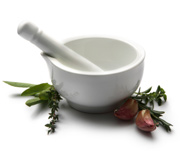
|
The Balancing Act: Acid and Alkaline The words alkaline and acid may not make the front page of TIME magazine or the Journal of the American Medical Association, but acid to alkaline ratio is one of the most important health concepts for longevity with vitality. In this article, the acid and alkaline ratio refers to the pH of the body's fluids in and around the cells; pH is a unit of measurement that describes the acidity or alkalinity of any substance. The lower the pH, the higher the acid. Ideally, we should have a pH between 7.0 and 7.4, with the goal being 7.4. There are many ways that pH affects health and numerous strategies to improve this ratio. Optimal pH: Our blood maintains a pH of 7.4; it will never vary from this amount for long and will do whatever it takes to maintain this pH. If body fluids become too acidic or drop below 7.0, the body signals to various organs and glands to pull calcium, magnesium and potassium out of the bones and other parts of the body. This process makes our body more alkaline, but it also robs the body of these necessary minerals. In my experience, the vast majority of Americans are too acidic. In our office, we measure the salivary pH (which mirrors the fluid around the cells) of every patient. The average person has a pH around 6.3, with some as low as 5.6. So what's the big deal? Pulling the above minerals out of their storage leads to tissue breakdown, osteoporosis, arthritis, advanced aging of cells, muscle and joint pain, increased risk of infection, cancer and heart disease. The role of diet: Foods that raise pH are alkaline-producing foods. When these foods are digested, they leave an alkaline ash or byproduct. Foods that lower pH are acid-producing and leave an acid ash. The American diet consists mostly of acid-producing foods such as sugar, grains, meats and dairy. Alkaline-producing foods are fruits and vegetables, in particular dark green leafy vegetables such as kale, collards, spinach and parsley. Stress and poor breathing habits make us more acidic. Deep breathing and meditation raise our pH. As you can see, if we go through the day stressed out, eating mostly grains, sugars and meats, we become very acidic. The most common early sign of being overly acidic is rising in the morning feeling very stiff, with general joint and muscle aches that don't necessarily correlate to an injured area. One of many cases I saw recently in my practice was a gentleman who complained of joint pain in his hands, knees and feet. He was diagnosed with osteoarthritis and prescribed the drug Celexa. When we measured his pH, it was a very acidic 5.8. We did nothing other than recommend he take a green food supplement, eat more green vegetables, drink a homemade alkaline broth and eat fewer grains. Within six weeks, his pH was 7.3, and he had virtually no joint pain. Testing pH: You should be able to find pH paper at a science or health food store (or see resources). To use the paper, have no food or water for 30 minutes, then suck on the paper and compare the color of the pH strip to the color chart included with kit. Most likely, you'll find that you are acidic. The pH paper is a good way to measure your progress. If you want to get creative, eat a bowl of salad with lots of greens, wait 30 minutes and then measure your pH. It'll skyrocket into a healthy range. Next, eat a slice of pizza and have a soda. Your pH will drop below 6.0. Balancing pH: First thing in the morning, drink a glass of filtered water with the juice from a freshly squeezed lemon. This instantly raises the pH. Or try an alkaline broth (see below) that helps to increase pH. In addition, eating at least two servings of fruits and three of vegetables will help your pH dramatically and keep you very healthy. If you are interested in buying some type of "green food" sold as a powder or capsule, I highly recommend you ask the company to give you a document stating that they have independently tested the contents for heavy metals, pesticides and bacteria, as this can be a problem in some of the green foods. Alkaline broth: Choose a combination of equal amounts from the following vegetables: celery, green beans, zucchini, spinach, parsley.
The summer is a great time to start eating green, so I highly recommend you take advantage of the season's produce now. You will feel better, have increased energy and greater vitality.
|
|
Acid and Alkaline Golden Rules for Vibrant Health in Body, Mind, and Spirit by Joseph J. Sweere, D.C. includes a chapter on acid and alkaline. While I don't know anything about their products, a good website for information on pH and acid and alkaline foods is www.vaxa.com/736.cfm. They also sell pH paper for saliva testing.
|
